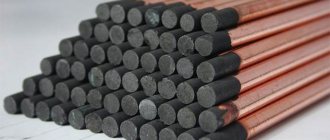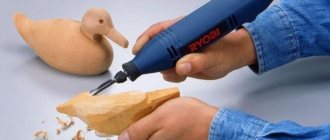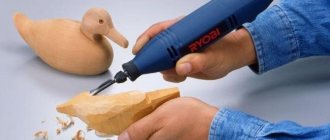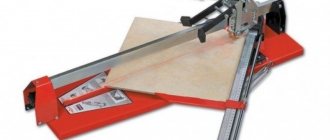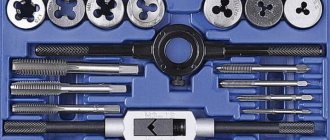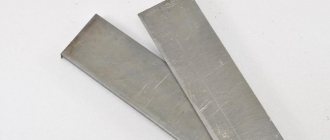What are solvents? By definition, these are volatile compounds of organic and inorganic origin that can liquefy or dissolve other materials. Such substances are also used to impart the necessary consistency and improve the properties of paints and varnishes.
Solvents can be produced on a single-component or composite basis; they can be solid, liquid and even gaseous. Liquid compositions are widely used in construction and for domestic needs. In particular, solvent 646, which we will look at in more detail.
What it is? Compound
Solvent 646 is a chemically active component used in almost any type of finishing work. The composition is designed to work with nitro-based enamels and varnishes, epoxy and glyphthalic primers. After the volatile components evaporate, the coating acquires a glossy tint.
The solvent is usually clear, but may have a yellowish tint. The mixture is multicomponent, with a sharp, characteristic odor.
The composition includes the following substances:
- 7% - acetone.
- 8% - ethyl cellosolve.
- 10% - butyl acetate.
- 10% - ethyl alcohol.
- 15% - butanol.
- 50% - toluene.
This chemical is produced in strict accordance with the requirements of GOST number 18188-72 . Currently, manufacturers are working to reduce the total concentration of acetone and toluene. This is due to the fact that these substances are often used in the manufacture of narcotic drugs.
How to calculate the amount of solvent by type of paint
Beautiful and evenly painted surfaces cannot be obtained without the correct choice of solvent for a specific type of paint and strict adherence to proportions when mixing them. This requires only basic knowledge about the purpose and types of solvents.
Paint solvents include rapidly evaporating chemical compounds made from organic or inorganic components. They are capable of changing the consistency of paints, forming a homogeneous mixture with them. These properties explain the main purpose of solvents. However, there are special types of highly concentrated dyes that can be used without adding solvents.
Solvents must meet several mandatory requirements, including:
- Compatibility with one or another type of paint. The rate of their evaporation after applying paint;
- Low hygroscopicity;
- The ability to mix well with paint and form a homogeneous composition with it.
Compatibility with various types of paint is the absence of a chemical reaction in which the dye may lose its properties. For example, acetone and similar solvents are intended only for use with nitro enamels. Adding it to oil-based paint will cause an instant chemical reaction, as a result of which the dye will become completely unusable.
After applying paint to the surface, the solvent is no longer needed and must evaporate. This property of solvents is also used when cleaning tools or areas of the human body where paint can get during painting work. The inability of the solvent to mix with water ensures an even and durable paint layer.
The required amount of solvent depends on its chemical properties, the type of paint and the rate and its consumption for various surfaces. Paint consumption standards are determined by the manufacturer based on the application of a single-layer coating per 1 sq.m. surfaces. This amount may vary depending on the absorbent characteristics of the material being painted. For example, for metal it is less, and for wood it is more. In addition, paint and solvent consumption rates depend on air temperature. For calculations, a temperature of at least + 15 degrees Celsius is selected.
The majority of manufacturers indicate on the packaging the required type of solvent that can be mixed with a given brand of paint. In addition, information about the optimal proportions of the mixture is also posted there. On average, these figures are 10-12% solvent when applying paint with a brush or roller. In cases where a pneumatic spray gun is used, this proportion can increase to 45-50% solvent.
Advantages and disadvantages
The positive characteristics of solvent 646 can be expressed as follows:
- Availability. The product is sold in any hardware store and attracts attention at an affordable price.
- Practicality. The operating instructions are indicated on the product packaging, so anyone can easily understand the features of the application.
- Functionality. Thanks to its multicomponent composition, the solvent can interact with almost any material.
In addition, adding the product speeds up the drying of the coating and promotes the formation of a smooth, glossy surface.
The material also has significant disadvantages. In particular:
- Increased level of toxicity.
- Fire hazard.
- Strong smell.
- Special storage conditions.
Therefore, when working with a chemical solution, safety precautions must be observed.
Tips and recommendations for use
Degreasers should be used with extreme caution, avoiding contact of the liquid with the skin. All work is carried out in the given sequence:
- The metal is cleaned before processing mainly mechanically. This must be done to eliminate various defects and rust. You can use regular sandpaper, as well as a grinder;
- areas that do not need to be treated are covered with special cloths;
- It is best to apply the degreaser to the processed fragment with a piece of cloth;
- the solvent is kept on the surface for a certain period of time, after which the excess is removed, and the metal area is primed and then painted.
Attention: If dirt cannot be removed with a rag, then small items should be placed in a container filled with solvent.
It is imperative to use a degreaser before painting. One should not make the mistake of many who decide to save time by skipping this important stage of metal processing. Rust that appears on the surface over time will force the owner to incur significant time and financial costs again.
Scope of application
Solvent 646 has a wide range of applications. In everyday life, the composition is used to remove oil and paint from hands. It is curious that the product cleans well even coloring pigments used in the textile industry. In addition, the composition is often used to clean tools after painting work.
They are also used to bring organic and chemical surfaces to the desired consistency, and are used in the production of paints and varnishes. In general, the products are equally suitable for the oil refining industry, mechanical engineering, finishing work and the needs of car repair shops.
In addition, the mixture based on petroleum products has found its application in the perfumery and cosmetics industry.
Purpose and use of metal degreaser
Any metal product requires preliminary cleaning of the surface from various types of contaminants, including grease. There are the following degreasing methods:
- mechanical - used when it is necessary to provide a rough surface for painting. The process is quite labor-intensive, requiring the use of various grinding brushes or wheels;
- electrochemical – effectively cleans metal products from fatty films, regardless of the thickness of the contamination. However, this cleaning method is acceptable only on a production scale, where there are specially equipped premises. If the cleaning technology is violated and the degreaser is overdosed, the product may be damaged, since the strength of the metal may be impaired;
- chemical is the most optimal method of degreasing. The process can be performed in production as well as at home.
It is also worth noting that it is best to use a chemical method of cleaning the metal surface from fats immediately before painting in well-ventilated areas, since the specific smell of anti-corrosion agents and degreasers is very toxic, which in itself is harmful to human health. It would not be superfluous for the employee to use special protective devices that will prevent possible poisoning by chemical vapors.
What is the difference between solvents 646 and 647?
Solvents are presented in stores in a fairly diverse assortment, but the most popular are numbers 646 and 647. At first glance, the compositions seem identical: they are produced by domestic enterprises, packaged in similar containers, and used in the same areas. However, there are minor but very important differences between the products.
A distinctive feature is the chemical composition of the solvents. We cited the components that make up 646 above, so we’ll talk about 647. This is also a multicomponent mixture, which includes the following substances:
- Ethyl acetate.
- Butanol
- Toulol.
- Butyl acetate.
As you probably noticed, the list of active ingredients does not include acetone. Thanks to this feature, solvent 647 is less active, so it can be used on surfaces that require careful care. The difference in chemical composition also affected the area of application. In particular, 647 is intended to increase the viscosity of nitrocellulose compounds.
Solvent “For enamels PF-115”
| Product description: As the name suggests, the Solvent “For PF-115 enamels” is ideal for diluting enamels of the “PF-115” type, regardless of the manufacturer and/or color of the paint and varnish material, as well as for cleaning the surface of the product before painting, washing tools, soaking brushes. Since the composition of the solvent ensures high-quality dissolution of both lean and fatty alkyd resins, it can be used to dilute almost all paints and varnishes with the indices “PF” and “GF”. |
Specifications 646
| Relative density | 0.87 g/cm3 |
| Boiling temperature | 59°С |
| Flash point | 6°С |
| Auto-ignition temperature | 428°C |
| Mass fraction of water (according to Fischer), no more | 2% |
| Ethyl ether volatility | 8-15 |
| Acid number, no more | 0.06 mg KOH/g |
| Coagulation number, not less | 35% |
Can the mixture be used for degreasing?
This is a very relevant question. If the surface is not degreased before painting or priming, adhesion is reduced and the coating will peel off in areas of remaining stains. The problem is different: how suitable solvent 646 is for preparatory work.
Let's start with the fact that degreasing surfaces is included in the scope of application of any thinning compositions. However, our solvent is the most aggressive among analogues. Therefore, when using a degreasing agent, you need to be careful.
Active components can damage the base and dissolve the paintwork. In addition, acetone is aggressive to plastic, so such surfaces cannot be degreased with solvent 646.
Substance consumption
If we talk about consumption per 1 m2 during degreasing, it is recommended to adhere to the following standards:
- External surfaces – 0.147 kg.
- Internal surfaces made of wood and metal – 120 kg.
- Concrete surfaces – 0.138 kg.
If the degreased surface is exposed to moisture and other aggressive environments, the consumption rate will be 0.169 kg.
Product consumption rate
You need to work with this substance carefully so as not to damage the surface being treated. For each type of work, the consumption of P646 will be different.
So, consumption for degreasing per sq. m. is:
- 0.12 l when working with metal or wood surfaces indoors;
- 0.147 l for facade work;
- 0.138 l for a layer of concrete. You can find out how long it takes concrete to dry from our review;
- 0.169 l when working with all types of surfaces at high humidity.
REMEMBER! The solvent should be added to paints and varnishes gradually in small parts and, constantly stirring, to achieve the required consistency. The mixture must be stirred until completely homogeneous, otherwise the finished surface may be damaged.
Use of P646 with other substances
The mixture is often used for various industrial purposes in combination with other substances. For example, in production shops there is a frequent need to coat condensate tanks, decarbonizing water tanks and other surfaces with varnish or enamel. Thus, 646 is used together with XB-784 varnishes. Moreover, its consumption is 0.086 l/m2.
It is preferable to carry out internal repair work together with NTs-25 enamel. In this case, the standard flow rate will be 0.120 l/m2. For coatings of pipelines and oil settling tanks, EP-5116 enamel is used, diluted with a solvent in proportions of 0.169 liters per square meter.
The product is also used together with NTs-11 enamel when processing metal surfaces that are used in conditions of changeable weather and with very high humidity.
And for non-metallic surfaces that are used in similar conditions, NC 1200 enamel is used. This enamel is diluted with a solvent in a ratio of 0.147 liters per square meter. To protect concrete and brick from the effects of the external environment, including alkalis and acids, putty is used. We recommend that you familiarize yourself with: how long it takes for finishing putty and plaster to dry on walls. And for better protection, it is diluted with 646, which is used in a ratio of 1.2 liters. per one square meter.
Precautionary measures
It is important to understand that the subject of our conversation belongs to the third class of chemical hazard. Therefore, when working with the composition, precautions must be taken. In particular, you will need safety glasses and gloves, and a respirator. In addition, work is carried out only in rooms with good ventilation.
If the chemical liquid gets on open areas of the body, the skin is immediately washed with warm water and soap. In case of contact with eyes or other mucous membranes, you should immediately consult a doctor.
In addition, the solvent belongs to the category of flammable and flammable substances. Therefore, there should be no open sources of fire or uninsulated electrical wiring in the premises. Smoking is strictly prohibited.
Analogues of solvent R-4
There are several solvents on the construction market with a similar composition and effect that can replace P-4:
- R-4A. This product contains acetone and toluene. Due to the absence of butyl acetate, it can be used for XB-124 enamel.
- R-5 and R-5A. Compositions based on acetone, butyl acetate and xylene have a similar effect to P-4 and can completely replace it. These solvents are well suited for coatings based on organosilicon elements, rubber, and polyacrylic resin.
- R-12. This type of solvent contains toluene, xylene and butyl acetate, but does not contain acetone. It has a faster ability to spontaneously combust, so safety precautions during operation must be observed even more strictly. Most often, R-12 is used to dilute car enamels and remove a layer of old paint.
Solvent R-4 is an inexpensive, high-quality and reliable composition for carrying out a variety of paintwork, priming and other finishing works. If you are careful, it will give the desired result quickly and at no extra cost.
Storage Features
The mixture of volatile organic substances is stored in the original packaging or hermetically sealed container, away from open sources of fire. Outdoor storage is not allowed to avoid contact of active components with a humid environment or direct sunlight.
The temperature range of storage conditions can vary within -40/+40 degrees .
The shelf life stated by the manufacturer is 12 months from the date of manufacture of the product. Provided that storage recommendations are followed.
Thinning car paints. Is it necessary?
Typically, painting a car with alkyd paint is done using a spray gun. Moreover, almost all high-quality paints have a certain shelf life.
When buying paint that will then need to be thinned, many people wonder how to dilute alkyd paint for a car. At the same time, few people ask: is it necessary to do this?
Much more often, you just need to throw out the low-quality paint and buy a new one - this way you will keep the spray gun intact and the car will have a presentable appearance.
Manufacturers
To purchase quality products, you need to take a responsible approach to choosing a manufacturer. If we talk about companies specializing in the production of solvent 646, we recommend paying attention to the products of such enterprises:
- Dmitrievsky chemical plant . This is one of the oldest and dynamically developing companies that produces products for the food, paint and varnish, leather and rubber industries. The company's products are widely known not only in Russia, but also in 70 countries around the world .
- Verkhnevolzhskaya paint and varnish company . One of the largest suppliers of paints and varnishes to countries near and far abroad. The product range includes primers, paints, enamels and solvents.
- "POLICOM" . It is a leading manufacturer of industrial and household chemicals. The production line is fully automated, the products meet international requirements.
All companies pay increased attention to product quality and work in accordance with GOST .
Paint thinners. Brief listing
White spirit solvent
In first place is the solvent “White spirit”.
Ideal for PF-115 enamel.
Gives good mobility of the mixture, not too toxic.
Often it can even be used to wash brushes and hands after work; it does not burn the skin.
Toluene solvent has similar properties, which shows the best results with parquet varnish PF-231.
Solvent 646 is ideal for automotive alkyd paints.
It is also often used for PF-115 and parquet enamel, but, unlike White Spirit, it does not give such mobility to the mixture and it requires better mixing.
However, due to its low cost, it is often used. If it comes into contact with the skin, it can cause a burn, this is one of the reasons for its unpopularity.
Turpentine. Previously, it was practically the only available solvent. Relatively inert. Not suitable for alkyd paints. Ideal for oil-based ones.
Kerosene has similar properties, which can also be used to wash hands and tools after work. Kerosene gives greater mobility to the mixture.
From the video you can learn how to dilute paint and varnish:
- LLC "Mendeleev"
Development and production of restoration and paint materials
Antiseptics and water repellents for wood, concrete, stone; auto chemical goods; removing old paint and graffiti; protective compounds against graffiti; anti-corrosion coatings; compositions against rust and efflorescence; corrosion inhibitors; solvents for printing, fiber optic processing, shoe processing; creation of materials according to customer requirements

